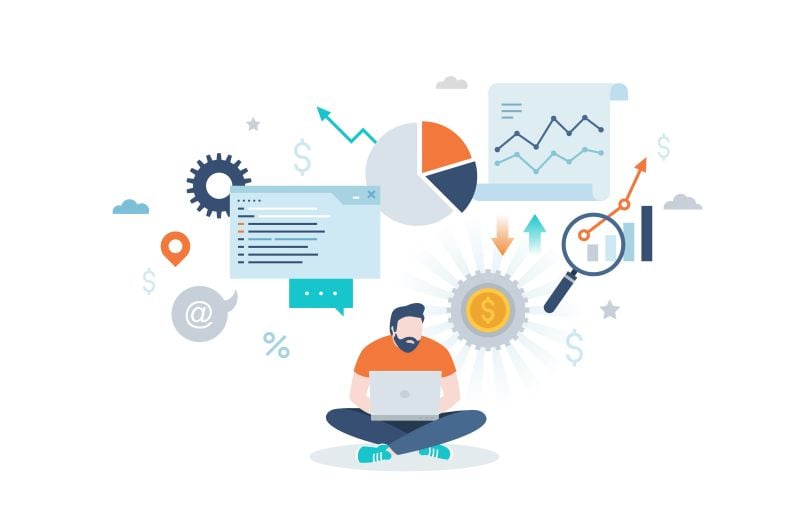In the beginning, Tamr’s sales team didn’t need a lot. Working primarily on inbound leads, Kelsey Cole — the team’s lone sales development rep at the time — mostly managed sales through email and phone calls. As the machine learning firm gained traction, it added the sales productivity platform Yesware to build email sequences in Gmail, Hubspot for marketing and Salesforce to track customer data, but little else — by design.
The lightweight system allowed the team to experiment and grow, Cole said. At that stage, every new hire meant adding new responsibilities to the roles and figuring out which sales strategies worked, and which didn’t. That slowly began to change in 2019 when Cole stepped into a sales operations role.
“Our stack was good for where we were at the time because the roles weren’t really defined,” Cole said. “Figuring out what worked for us at the time was really important. Once we understood what the roles would look like and what repeatability would be, then we could add tools.”
As the team has matured and processes have snapped into place, it’s been Cole’s responsibility to research and add new technologies. It’s a tricky path to navigate. Adding to the tech stack isn’t just about picking the right tool from the hundreds of options available, it’s about knowing when to adopt it too, Cole said.
“There’s always a balance. Do you want to be ahead of the curve and purchase tools to fit specialties? Or do you want to wait until a specialist is there?”
Procuring a tool before a position has solidified could make it obsolete or a nuisance to maintain, but that same tool could also be helpful in scaling the position. For Cole, it comes down to nailing repeatability first, then scaling the task with a tool.
“There’s always a balance. Do you want to be ahead of the curve and purchase tools to fit specialties? Or do you want to wait until a specialist is there?” Cole said. “We’ve done a mix, but usually, once a specialty starts forming, then we can put a tool in place.”
We asked Cole how he picked the tools for his team.
Tamr’s Sales Stack
- Prospecting: LinkedIn Sales Navigator
- Contact Database: DiscoverOrg
- Revenue Analysis: InsightSquared
- Email Sequencing: Outreach
- Contract Analytics: LinkSquares
- Content Enablement Tracker: Air Table
- Sales Insights: Gong.io
- CRM: Salesforce

Knowing When to Expand Processes
When it comes to adopting a new tool, it can be tempting to go straight for adding the most well-known products as soon as possible.
For a long time, Tamr had been on the fence about using the email cadencing tool Outreach. The company first considered the software in 2017, but the product had a number of drawbacks, Cole said. With Salesforce and Gmail in place, Outreach would create a third platform that sales development reps would have to manage. It would also mean a centralized outreach approach.
“When you have a good idea of the sequencing and process we need for getting different prospects ... then you can have one person developing the content and doing the sequencing.”
With only three reps and an outreach strategy in its infancy, the tool didn’t make sense yet, Cole said. So, they decided to hold off, allowing reps to craft their own email templates and outreach through Yesware.
“When we were in ‘find repeatability mode,’ we needed more people trying different things. They needed more ownership of the content,” Cole said. “But when you have a good idea of the sequencing and process we need for getting different prospects ... then you can have one person developing the content and doing the sequencing.”
Tamr reached that stage in July of 2019. With about five reps in place and an email playbook that worked, an email sequencing tool became more viable, Cole said. The team had passed the trial-and-error phase and had reached the point where it wanted to scale the strategies that worked and pass them down to new hires.
The team was ready for Outreach.
“As we grow on the SDR front, having Outreach ready to go will also help onboarding SDRs,” Cole said. “Rather than training them to think about content development, they’ll just be able to start sending stuff out and focus on our messaging.”
Generate Buy-In From the Team Before Adding a Tool
While sales software can help make a salesperson’s job easier, not every tool is going to generate enthusiasm on your team.
Cole experienced that pushback first-hand when he introduced the recording tool Gong.io. Most of Tamr’s sales tech stack was built through a bottom-up approach, with salespeople requesting a tool, trying it out and determining whether it was useful or not. Gong, however, came from a need the managers identified.
“The biggest objection was that nobody wanted to be recorded and people aren’t going to consent to it.”
With first-call conversion rates lagging, the team needed a tool that would help it figure out what was happening on those first calls and fix it. While the sales team could provide anecdotal reasons, it wasn’t enough information to identify trends. Gong would allow them to record the calls and curate the data they needed.
When Cole went to demo it, it brought immediate pushback.
“There was a lot of resistance in adopting the tool initially,” Cole said. “The biggest objection was that nobody wanted to be recorded and people aren’t going to consent to it.”
Despite the need for the tool, Cole knew it wouldn’t matter if the team didn’t use it. To generate that buy-in, he started with a trial run involving two sellers that allowed them to see the product in action. From there, they rolled it out to the team, encouraging them to try it out and share any concerns with Gong.
“We made it easy for them. We told them, ‘If you don’t want to turn this on, you don’t have to, but at least try it out,’” Cole said. “And people started using it.”
Giving the team the freedom to try it out at their own pace allowed them to experiment with it and see how customers would respond to being asked for recording permission. Once the sales team saw customers didn’t mind being recorded and that Gong’s transcripts streamlined their note-taking, the resistance faded, Cole said.
“It’s just improved the ability of sellers to understand what they’re doing,” Cole said. “So the swing from resistance to enthusiasm was just really remarkable for that tool.”

Be Willing to Experiment, but Also to Discard a Tool If It Isn’t Being Used
While Gong was a successful top-down roll out, Cole still prefers to give the sales team room to experiment.
If they see a tool that will make life easier for reps or help them close more deals, he’ll procure it for them. That approach has helped him find tools that he might not have thought would be helpful at first glance, and to avoid ones that would have been unhelpful.
“The reps each have their own iteration of the sales process,” Cole said. “And one of them, if empowered, could help us find something that will improve the productivity of everybody. We don’t want to limit that.”
Instead, it’s more important to manage the tools people aren’t using. Once he procures the license for a software, he gives it three months for people to adopt it and start using it. During that time, he’ll run a few training and enablement sessions, but if people don’t use it or if it isn’t providing value, it’s gone.
“The reps each have their own iteration of the sales process, and one of them, if empowered, could help us find something that will improve the productivity of everybody. We don’t want to limit that.”
For now, those decisions are made on a case-by-case basis, as most of the tools are only six or seven months old. As the company’s sales stack becomes more advanced, Cole said the goal is to evaluate software based on data like sales outcomes, conversion rates and pipeline generation. No tool is safe, but all are part of the learning process of building out a sales tech stack, Cole said.
“I believe that we don’t have the perfect answers yet,” Cole said. “The ability to learn and grow and experiment is really crucial to a company of our size.




